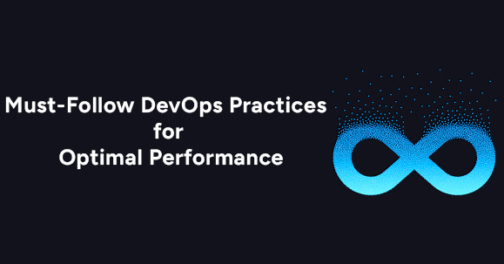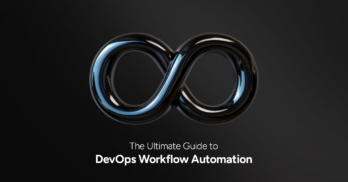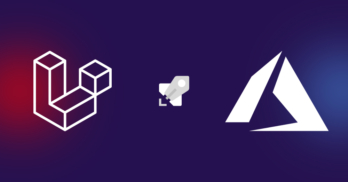Greetings! I'm Aneesh Sreedharan, CEO of 2Hats Logic Solutions. At 2Hats Logic Solutions, we are dedicated to providing technical expertise and resolving your concerns in the world of technology. Our blog page serves as a resource where we share insights and experiences, offering valuable perspectives on your queries.

In today’s fast-paced digital landscape, achieving optimal performance and continuous delivery is crucial for any organization. DevOps practices have emerged as the cornerstone of successful software development and IT operations, bridging the gap between development and operations teams. By adopting the right DevOps practices, businesses can streamline workflows, enhance collaboration, and accelerate the delivery of high-quality software. In this blog, we’ll explore the must-follow DevOps practices that can help you optimize your processes and drive consistent, reliable outcomes.
What Is DevOps?
DevOps is a collaborative technique that combines both software development (Dev) and IT operations (Ops). It’s designed to enhance the efficiency and speed of the software development lifecycle by integrating development, testing, deployment, and operations into a continuous process. Unlike traditional methodologies where these stages occur in silos, DevOps promotes a culture of collaboration and shared responsibility. This results in faster releases, higher-quality software, and more agile responses to changing market demands. By automating repetitive tasks and utilizing tools that support continuous integration and continuous delivery (CI/CD), DevOps enables teams to innovate rapidly while maintaining stability and reliability.
Why DevOps Practices Matter
DevOps practices are essential for modern businesses aiming to stay competitive in a fast-paced digital landscape. Implementing DevOps practices leads to shorter development cycles, allowing for quicker time-to-market for new features and products. It also enhances the ability to recover from failures, as continuous monitoring and real-time feedback loops enable faster identification and resolution of issues. Furthermore, DevOps fosters a culture of continuous improvement, where teams are empowered to make data-driven decisions and automate routine tasks, reducing the likelihood of human error. By adopting DevOps practices, organizations can achieve higher levels of efficiency, innovation, and customer satisfaction.
Top DevOps Practices
1. Continuous Integration (CI) and Continuous Deployment (CD)
- Continuous Integration (CI): Regularly merge code changes into a central repository with automated builds and tests to ensure new changes do not disrupt existing functionality.
- Frequent Testing: Catch issues early to prevent bugs from accumulating.
- Immediate Feedback: Accelerate development with prompt feedback on code changes.
- Reduced Integration Risks: Minimize risks associated with large-scale integrations.
- Continuous Deployment (CD): Automate the release of code changes to production to enhance release cycles.
- Automates Releases: Reduce manual errors and streamline deployments.
- Faster Time-to-Market: Enable quicker delivery of features and fixes.
- Consistent Releases: Improve reliability with consistent, automated releases.
2. Practice Continuous Monitoring
- Continuous Monitoring: Track performance and health in real-time to ensure system stability and reliability.
- Real-Time Insights: Detect and address issues before they impact users.
- Proactive Issue Resolution: Resolve potential problems early to minimize downtime.
- Performance Optimization: Continuously improve system performance with real-time data.
3. Automate Routine Tasks
- Automation: Streamline repetitive tasks to boost productivity and reduce errors.
- Error Reduction: Minimize manual errors in code builds and deployments.
- Speed and Efficiency: Accelerate development cycles with automated processes.
- Resource Optimization: Focus on high-value activities by automating routine tasks.
4. Set Up Automated Testing
- Automated Testing: Improve code quality and speed up development by systematically covering test cases.
- Enhances Code Quality: Ensure thorough validation and reduce defects.
- Reduces Production Bugs: Minimize bugs reaching production environments.
- Speeds Up Feedback Loop: Quickly identify and fix issues to accelerate development.
- Increases Test Coverage: Cover more scenarios compared to manual testing.
- Lowering Maintenance Costs: Reduce software maintenance costs by catching issues early.
- Minimizes Human Error: Ensure reliability by reducing manual testing errors.
- Incorporates AIOps: Optimize testing processes with AI for enhanced efficiency.
5. Adopt a Microservices Architecture
- Microservices Architecture: Enhance flexibility, scalability, and resilience by decomposing applications into independent services.
- Enhanced Flexibility: Develop and update services independently for faster feature rollouts.
- Scalability: Scale individual services based on demand for optimal performance.
- Improved Resilience: Isolate failures to maintain system reliability.
- Streamlined Maintenance: Perform updates and maintenance without affecting the entire system.
6. Integrate Continuous Security (DevSecOps)
- DevSecOps: Embed security practices throughout the development lifecycle to protect applications and infrastructure.
- Proactive Risk Management: Identify and address vulnerabilities early.
- Continuous Security: Ensure ongoing protection by integrating security into CI/CD pipelines.
- Shared Responsibility: Involve all teams in maintaining security.
- Software Supply Chain Protection: Safeguard against threats targeting the software supply chain.
7. Use Infrastructure as Code (IaC)
- Infrastructure as Code (IaC): Treat cloud infrastructure with the same principles as application code for automated, consistent management.
- Consistency and Scalability: Apply automation and version control for infrastructure management.
- Enhanced Transparency: Audit and track changes easily.
- Rapid Rollbacks: Revert to previous infrastructure states quickly.
- Increased Productivity: Enable self-service for faster resource creation and management.
8. Prioritize Concepts Over Tools
- Tool Selection: Choose tools based on their fit for your needs, not just their trendiness.
- Maintainability: Evaluate how easy it is to support new tools.
- Operational Overhead: Consider the additional burden and complexity.
- Dependencies: Analyze the impact on existing system dependencies.
- Cognitive Load: Assess the mental effort required to manage new tools.
9. Don’t Sacrifice Quality for Speed
- Balancing Speed, Quality and Security: Ensure rapid delivery does not compromise software quality.
- Equal Prioritization: Balance speed and quality, avoiding shortcuts.
- Automated Testing: Implement robust tests to maintain software integrity.
- Avoid Shortcuts: Uphold thorough testing and validation processes to preserve quality.
How 2Hats Logic Can Help You with Your DevOps Practices
At 2Hats Logic, we understand the transformative power of DevOps practices in driving business success. Our team of experts is dedicated to helping you implement and optimize your DevOps strategy, ensuring seamless integration across your development and operations teams. We offer tailored solutions that align with your unique business needs, from setting up CI/CD pipelines to automating infrastructure management. With our guidance, you can achieve faster deployment cycles, enhanced system reliability, and a more agile response to market changes. Partner with 2Hats Logic to elevate your DevOps practices and unlock the full potential of your technology investments.

Related Articles






